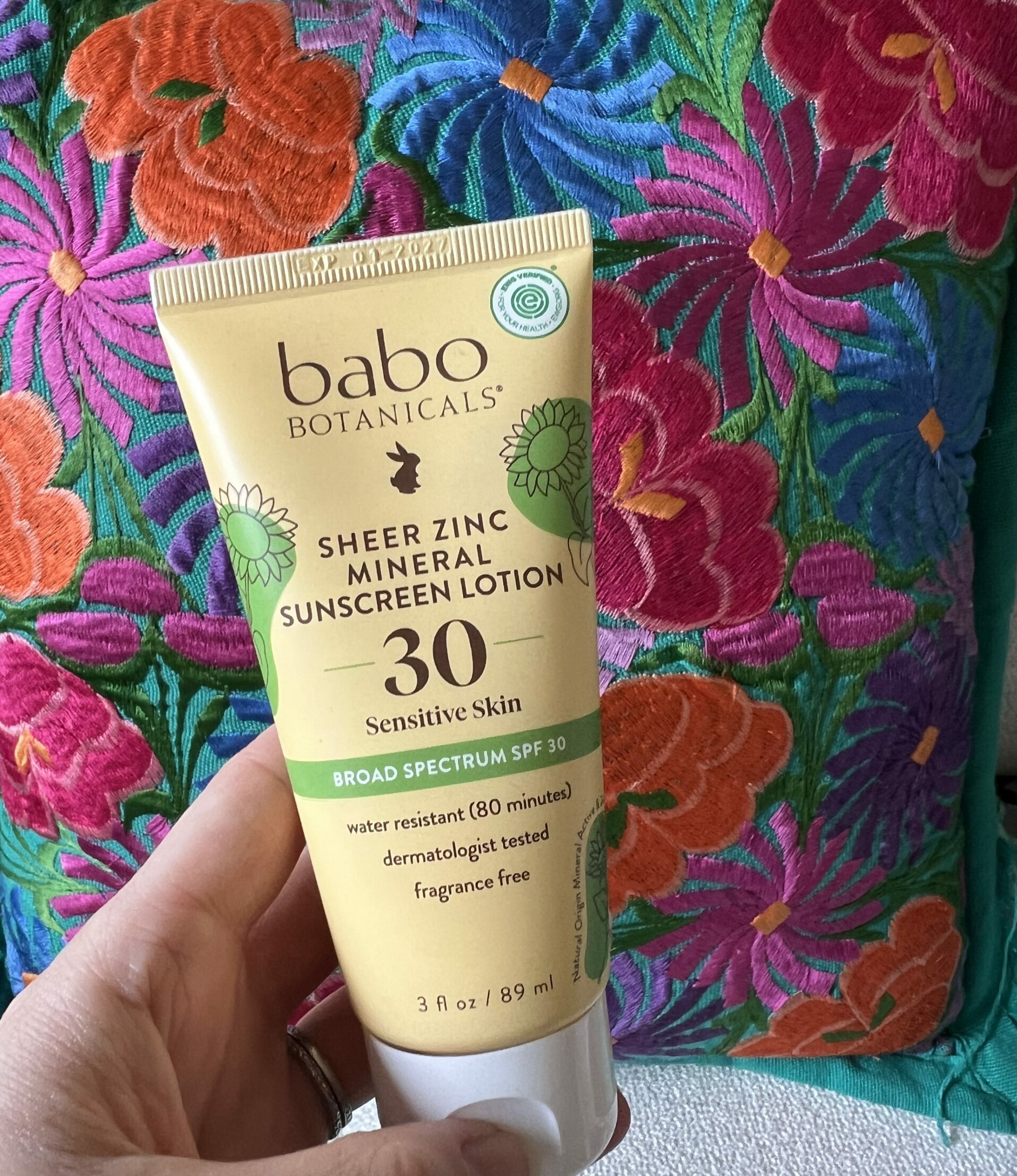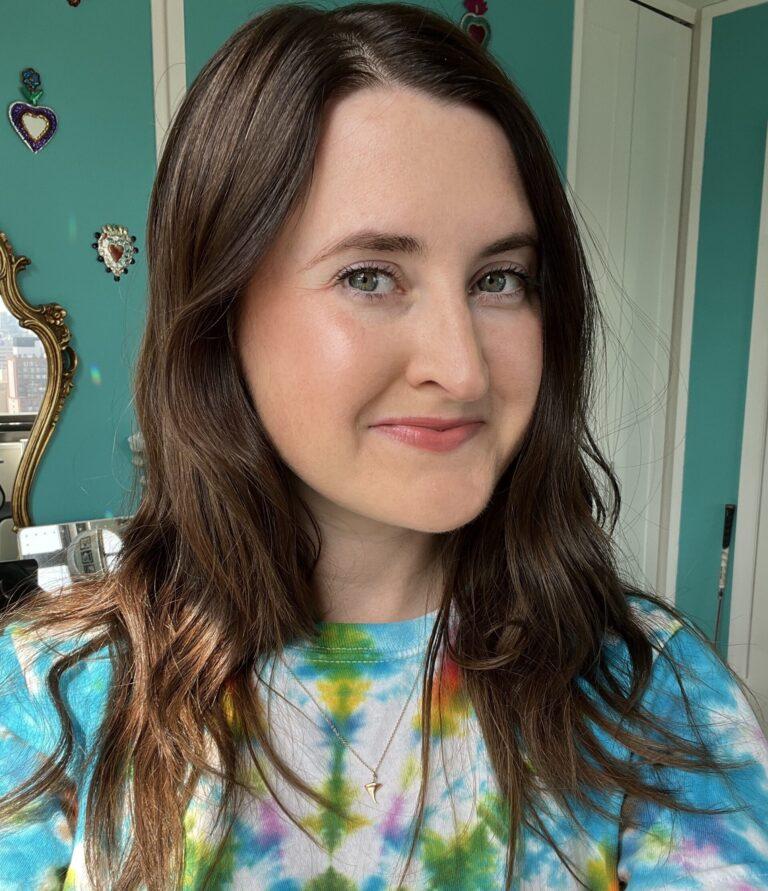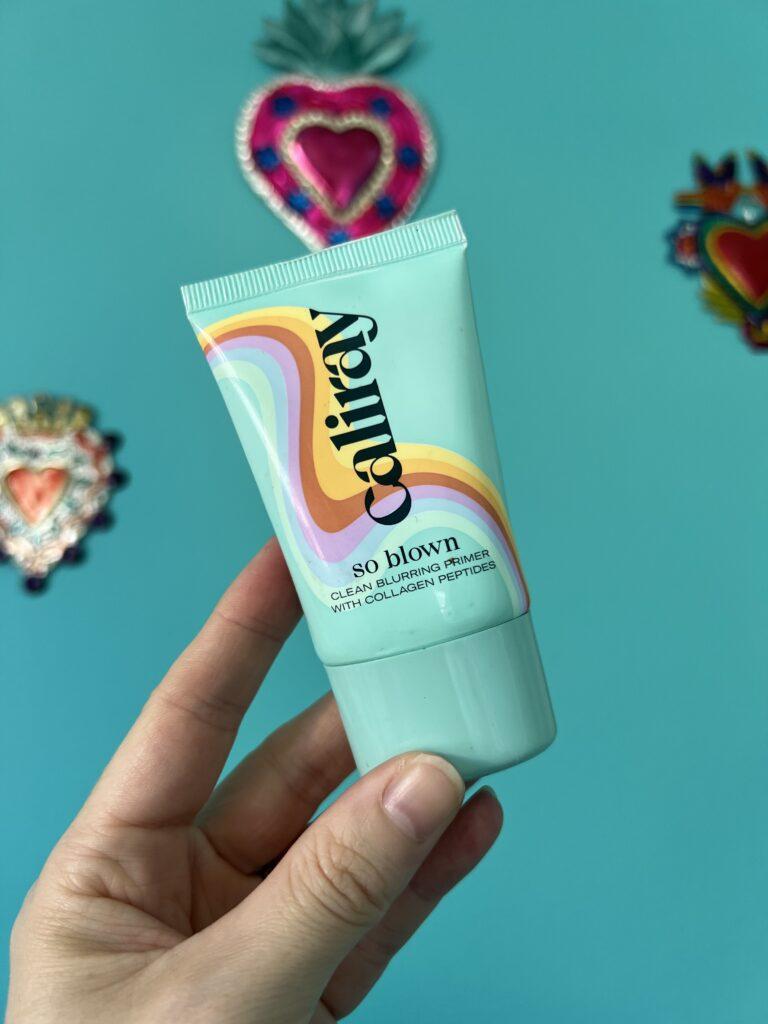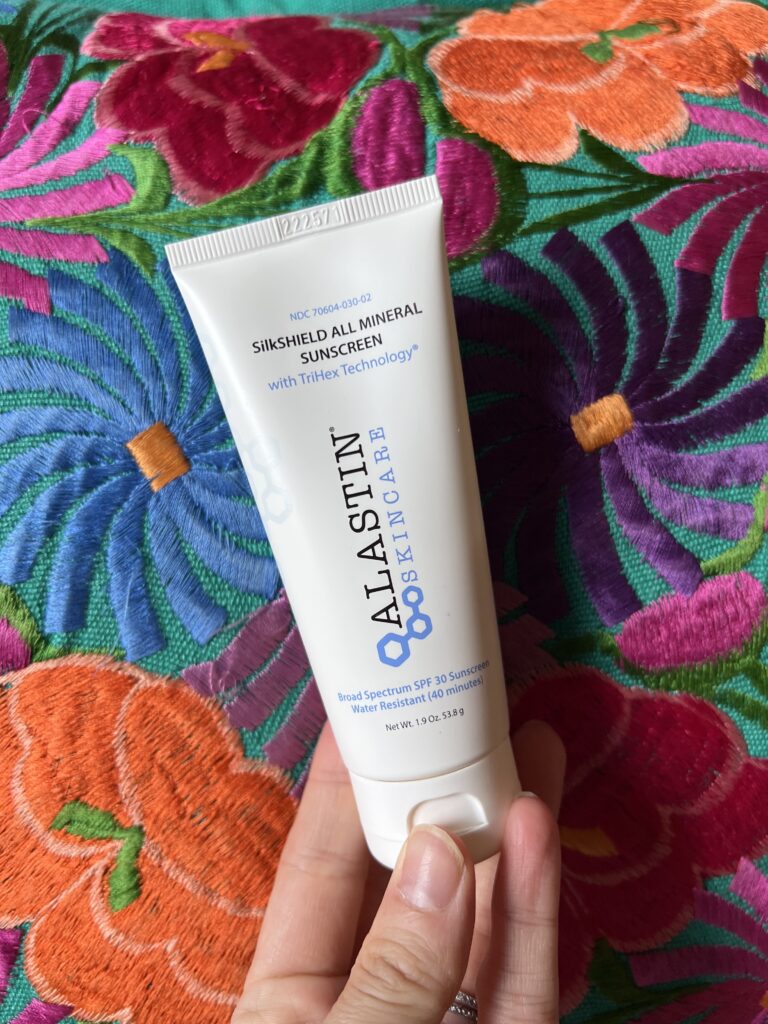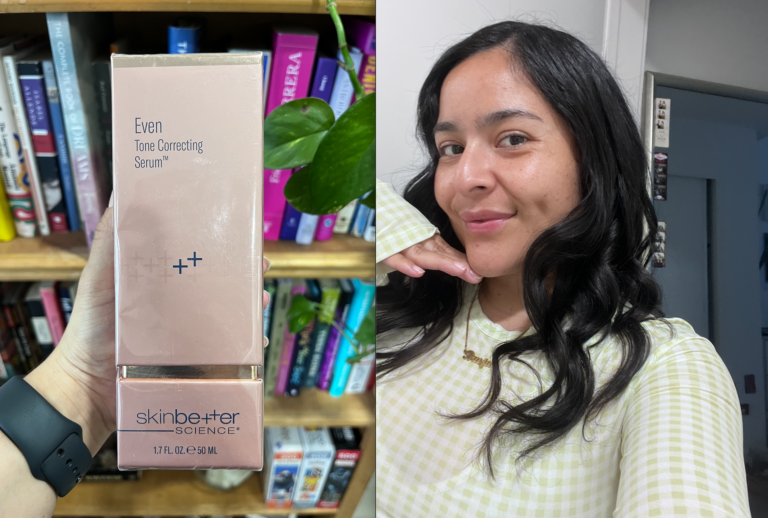The Best Non-Toxic Sunscreens
It’s crazy how something that’s supposed to prevent you from getting cancer might actually cause cancer! Unless you’ve been living under a rock lately, you’ve probably heard about the latest controversy with sunscreens getting recalled for cancer-causing chemicals or being banned because they’re ruining reefs.
There is still a lot of research being done around chemicals in sunscreens. I’m not a doctor or scientist, and I don’t think you should be afraid of sunscreens that include chemicals that have been well-studied and researched over decades. However, if you want to play it safe, consider trying out one of the best non-toxic sunscreens on this list to protect your skin while also protecting your health, too.

Best Non-Toxic Sunscreens:
Here’s What You Need to Know
Non-Toxic Sunscreens: Chemical vs. Physical
Even though I’ve been a beauty editor for 10 years at this point, I only really understood the difference between chemical and physical sunscreen about five years ago. This is the easy break-down: Chemical sunscreens contain chemicals that, when absorbed into the skin, actually absorb the UV rays energy and protect your skin from getting burned. Physical sunscreens, on the other hand, include ingredients that sit on top of your skin and reflect the harmful UV rays off your skin, basically bouncing them off.
You will probably find that physical sunscreens will be more non-toxic than chemical sunscreens, because chemical sunscreens contain, well, a lot of chemicals and are meant to absorb into the skin.
What is a Non-Toxic Sunscreen?
To understand what a non-toxic sunscreen is, we’ll first have to unpack what a toxic sunscreen is.
According to West Dermatology, a medical, surgical, and cosmetic dermatology practice with locations in California, Nevada, and Arizona, sunscreen might be considered toxic if it has “ingredients like avobenzone, homosalate, octinoxate, octisalate, and oxybenzone [as they] are stored in the body for weeks after one application.” (These are the chemicals used, which makes these types of sunscreens chemical sunscreens.)
That said, though, West Dermatology also states that these ingredients weren’t “conclusively shown to cause long-term harm, so maybe the “toxic” moniker is a stretch. Let’s talk about why by discussing which ingredients to look for and which to avoid when you’re shopping for sunscreen.
Ingredients to Look for in Sunscreen
While it might not necessarily be an ingredient so much as it is a measure of UV and sun ray protection, you always want to make sure that you’re peeping the SPF on any sunscreen. For reference, most dermatologists recommend an SPF, or sun protection factor, of at least 30 because that’ll block 97% of the sun’s UVB rays.
Remember when we said that toxic was a bit of a stretch? That comes strongly into play here, considering that most sunscreens with safe chemicals are labeled toxic simply because they’re chemicals and not minerals. While there are myriad chemicals to protect you from the sun, like avobenzone and octinoxate, there aren’t all that many mineral (aka non-toxic) options.
Basically, you can consider your sunscreen good to go if it includes some sort of oxide. As board-certified dermatologist Joshua Zeichner told Save the Reef, an organization whose purpose is the same as its name, “The term reef safe typically means that the sunscreen contains only mineral UV-blocking ingredients like oxide and titanium dioxide.” To be completely honest, I think of reef-safe, non-toxic, and mineral sunscreen as synonymous.
Ingredients to Avoid in Sunscreen
Again, the ingredients that stay in your body are what you want to avoid. And those are:
- Avobenzone
- Homosalate
- Octinoxate
- Octisalate
- Oxybenzone
“Because sunscreens must be applied and reapplied daily, some synthetic ingredients can build in the system and even become detectable in breast milk,” says West Dermatology. Not only do these substances remain in your system for weeks post-application, but they might also harm our reefs.
According to the National Park Service, “Sunscreens that include the ingredients oxybenzone, octinoxate, and avobenzone can harm coral reefs [by] leading to coral bleaching and adverse effects of reef reproduction.” While these chemicals weren’t conclusively linked to long-term issues, I think they’re worth avoiding to keep the reefs safe.
Some other ingredients to avoid in sunscreen include synthetic ingredients, particularly if you have sensitive skin, says West Dermatology. Fragrance is a great example of something to steer clear of because it might irritate your skin. Lastly, if you have oily skin, you should also stay away from comedogenic (i.e., pore-blocking) oils, butter, and waxes, like para-aminobenzoic acid, soybean oil, and wheat germ oil.
6 Best Non-Toxic Sunscreens
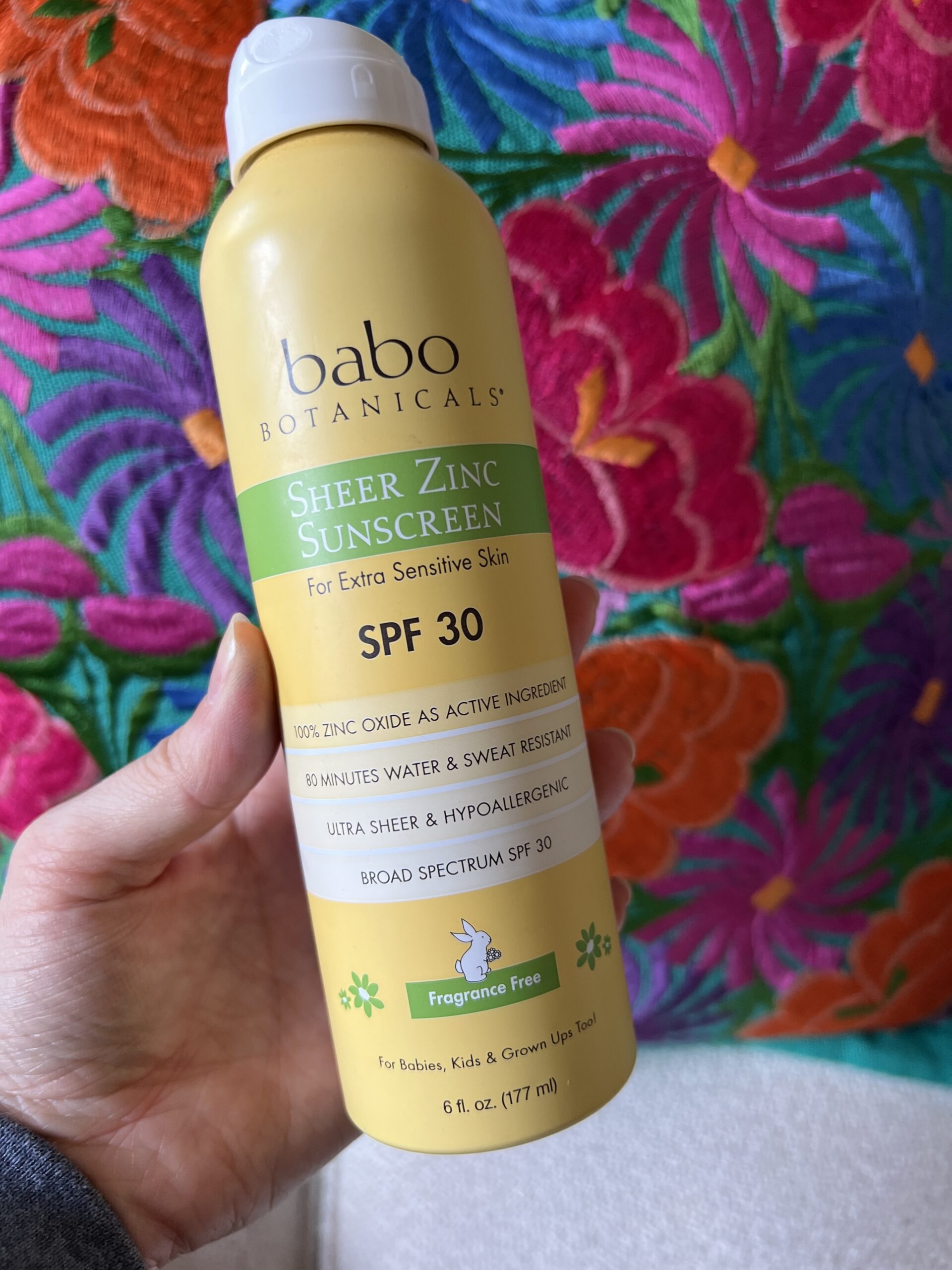
Babo Botanicals Sheer Zinc Sunscreen Spray SPF 30
This spray is great! It has the loveliest mist, and blends into the skin really nicely. It’s not too white and doesn’t leave an insane white cast. It dries down pretty clear and doesn’t feel heavy on the skin either. It lasted on my skin for a pretty decent amount of time, and did a good job of protecting my skin against sunburn.
I love that this formula is fragrance-free and is ideal for those with extra sensitive skin. It can be used on babies, kids, and adults, and is free of parabens, phthalates, soy, dairy, and gluten, too. I probably wouldn’t put this on my face, just because I don’t like to apply body sunscreen on my face. I definitely plan on repurchasing this pick in the future.
Available at Amazon ($21)
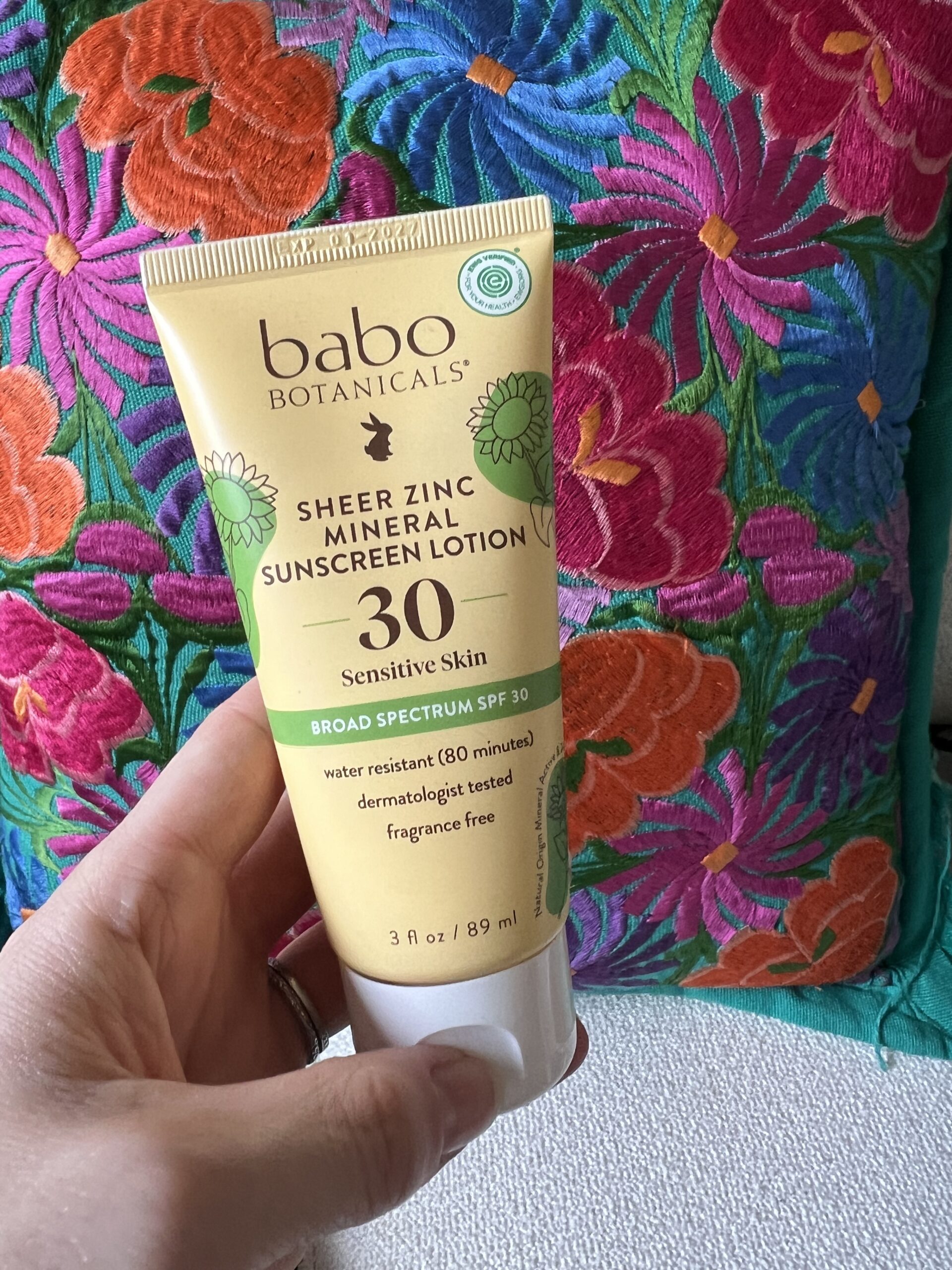
Babo Botanicals Sheer Zinc Mineral Sunscreen Lotion SPF 30
As you will see in this blog post, I am thoroughly impressed with the Babo Botanicals sunscreens. If you like a lotion sunscreen, this is a great option for you. It is impressively sheer and feels really nice on the skin. It’s fragrance-free and absorbs into the skin fast. I love that it’s EWG-verified and contains hydrating ingredients like sunflower oil and shea butter.
I’d say this one is pretty safe to apply to your face without breaking out or getting irritated. The biggest downside with this pick is that the bottle is so small, and probably won’t last you very long, especially if you are using this for the whole family. It costs around $18 for 3 fluid oz.
Available at Amazon ($18)
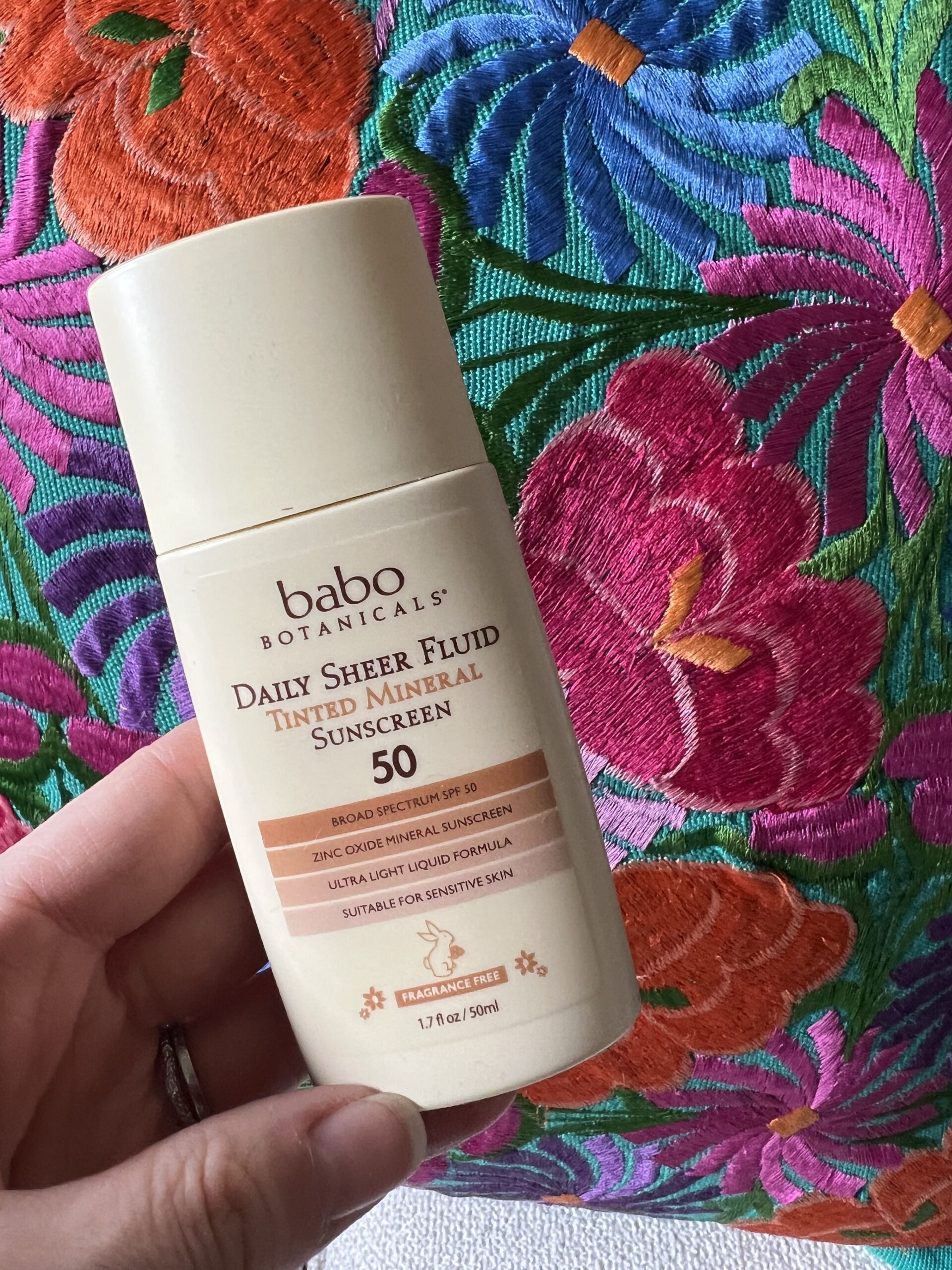
Babo Botanicals Babo Botanicals Daily Sheer Tinted Mineral Sunscreen Fluid SPF 50
I’ve recommended this sunscreen before because I think it’s a great option for those with acne-prone skin. The brand just came out with a lighter shade, but I’ve been using the darker shade for years. I’ll probably start using the lighter shade, as I’m pretty pale these days.
There are many things I love about this facial sunscreen. It’s EWG-verified and doesn’t contain any ingredients that make my very sensitive, very acne-prone skin break out. I love that it has a slight tint, which helps to cover up the redness and acne on my face.
The formula is super thin and blends into the skin really nicely. It leaves a sheen on my face that adds a bit of a glow. If you don’t like glowy facial products, I would probably stay away from this one.
Some folks consider this the healthier dupe version of the super popular La Roche-Posay Ultra Light Fluid Face Sunscreen SPF. It’s a really runny formula, so don’t be surprised if it doesn’t last on your face for super long. Personally, I’ve never had any issues, but I don’t think this has as much staying power as some other facial mineral sunscreens.
Available at Amazon ($23)
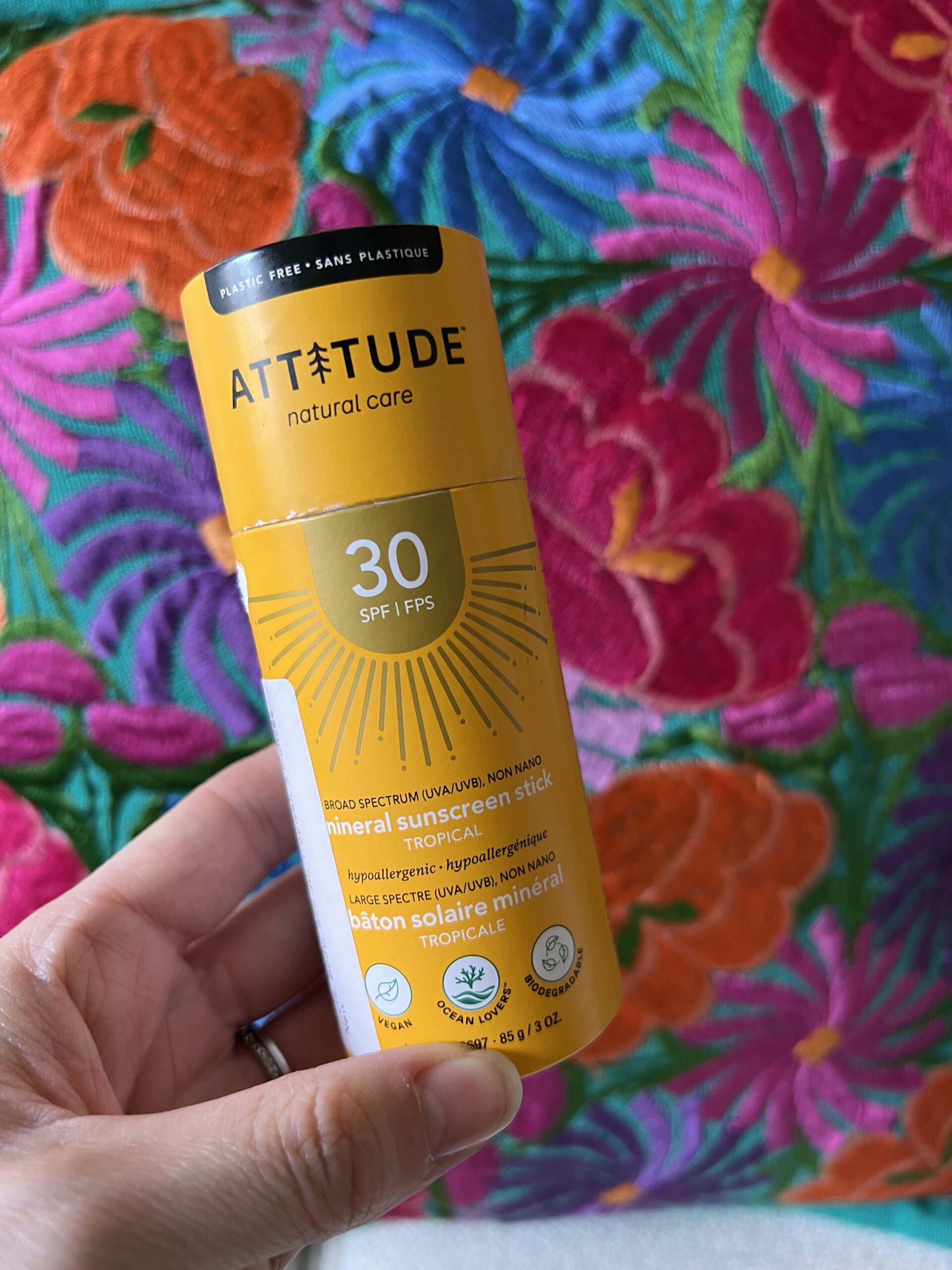
ATTITUDE Mineral Sunscreen Stick SPF 30
After doing a bunch of research online, it looked like a lot of the ATTITUDE sunscreens weren’t super great. It’s a bummer because all of them are EWG-certified and are definitely non-toxic and eco-friendly. One of the ATTITUDE sunscreens that got good reviews was the ATTITUDE Mineral Sunscreen Stick SPF 30. I purchased the one with the “tropical” scent, and I’m pleasantly surprised by this formulation.
First off, it comes in a super eco-friendly, plastic-free biodegradable cardboard tube. We obviously love this because it’s great on the environment and great for the Earth. I also love that this is reef-safe and EWG-verified, too. It’s formulated with non-nano zinc oxide and also contains grape seed oil, coconut oil, sunflower seed oil, and sunflower seed wax.
Like most mineral sunscreen sticks, this has a pretty thick formula. When you swipe it onto your skin, you’re going to need to rub it in with your hands. It rubs in pretty well and doesn’t leave a big white cast, but it does leave a bit of whiteness on your skin. Although some folks might not like the thick formula, I think this is a great option for those who sweat a lot or are playing sports, as I can’t see this one budging quite like a sunscreen with a thinner formula.
I don’t typically use sunscreen sticks, so this formula was a bit new to me. I’ll typicaly bring this pick to the park so that I can apply it to my chest and arms. I see this stick more as a touch-up sunscreen stick, rather than a full body sunscreen. Of course, you can use this on your entire body if you’d like, it just might take you a while to rub it all in. Personally, I think this would be too thick for facial application, but everyone has different preferences!
Available at ATTITUDE ($20)
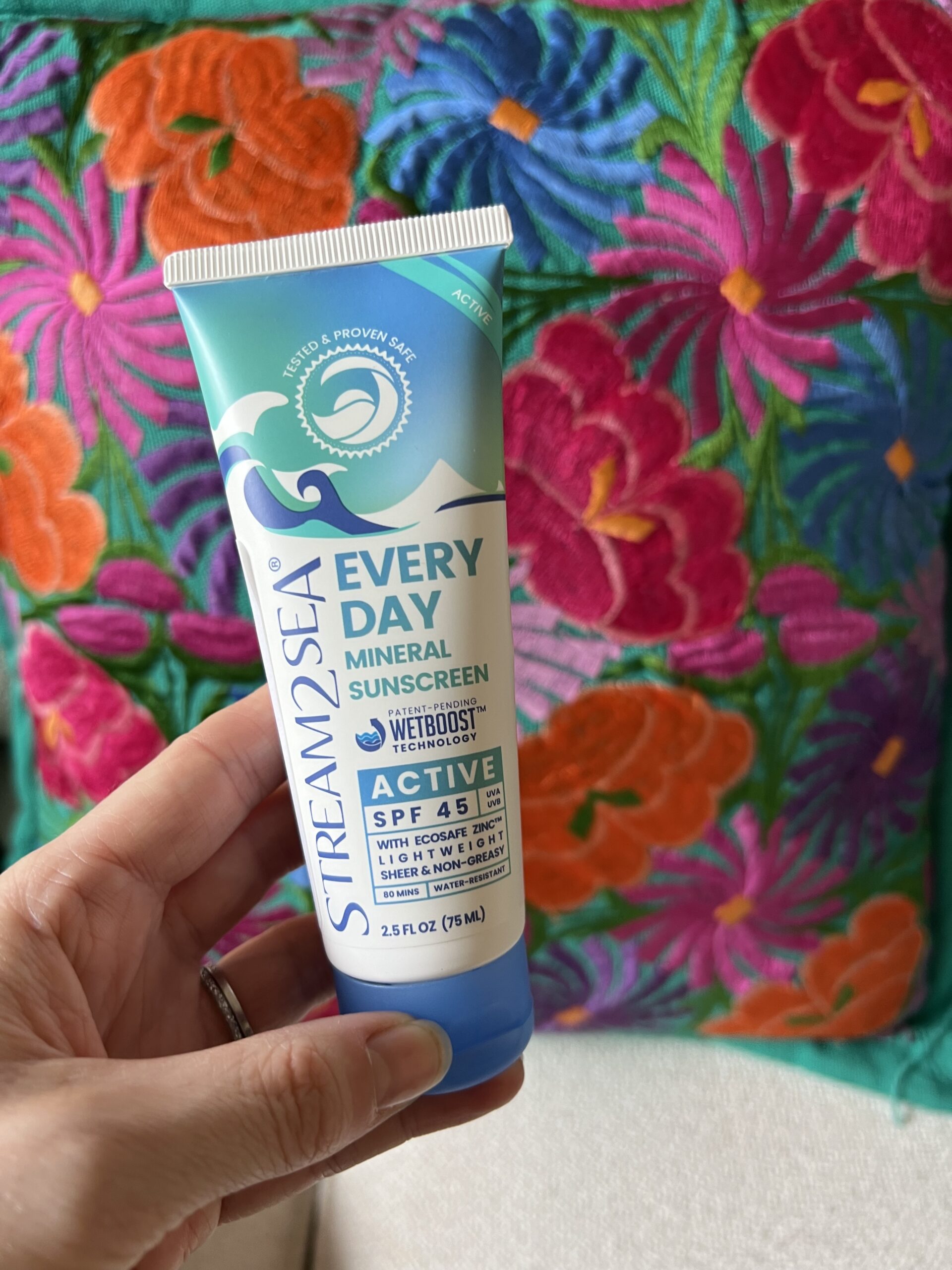
Stream2Sea Everyday Mineral Sunscreen Active SPF 45
This is definitely your typical mineral sunscreen that’s not the easiest to rub in and definitely not sheer. What I do like about this sunscreen is that it’s EWG-verified, meaning it’s super clean, non-toxic, and safe to use on your body. Another thing I like about this formula is that it’s water-resistant up to 80 minutes, and is really great for those who are active and will be sweating a lot or will be swimming. I feel like this is one of those mineral sunscreens that will withstand a lot of water, because it feels pretty durable on the skin.
One thing I hate about this formula is that it’s so expensive for just 2.5 fluid oz. At $27 per bottle, I don’t know if it’s totally worth the price. If you are really hunkering for a reef-safe, biodegradable face and body sunscreen that stands up to a lot of sweat and water, I’d recommend this. But if you want a more sheer, breathable sunscreen that’s just for lounging in the sun, I would pick something else on this list.
Available at Amazon ($27)
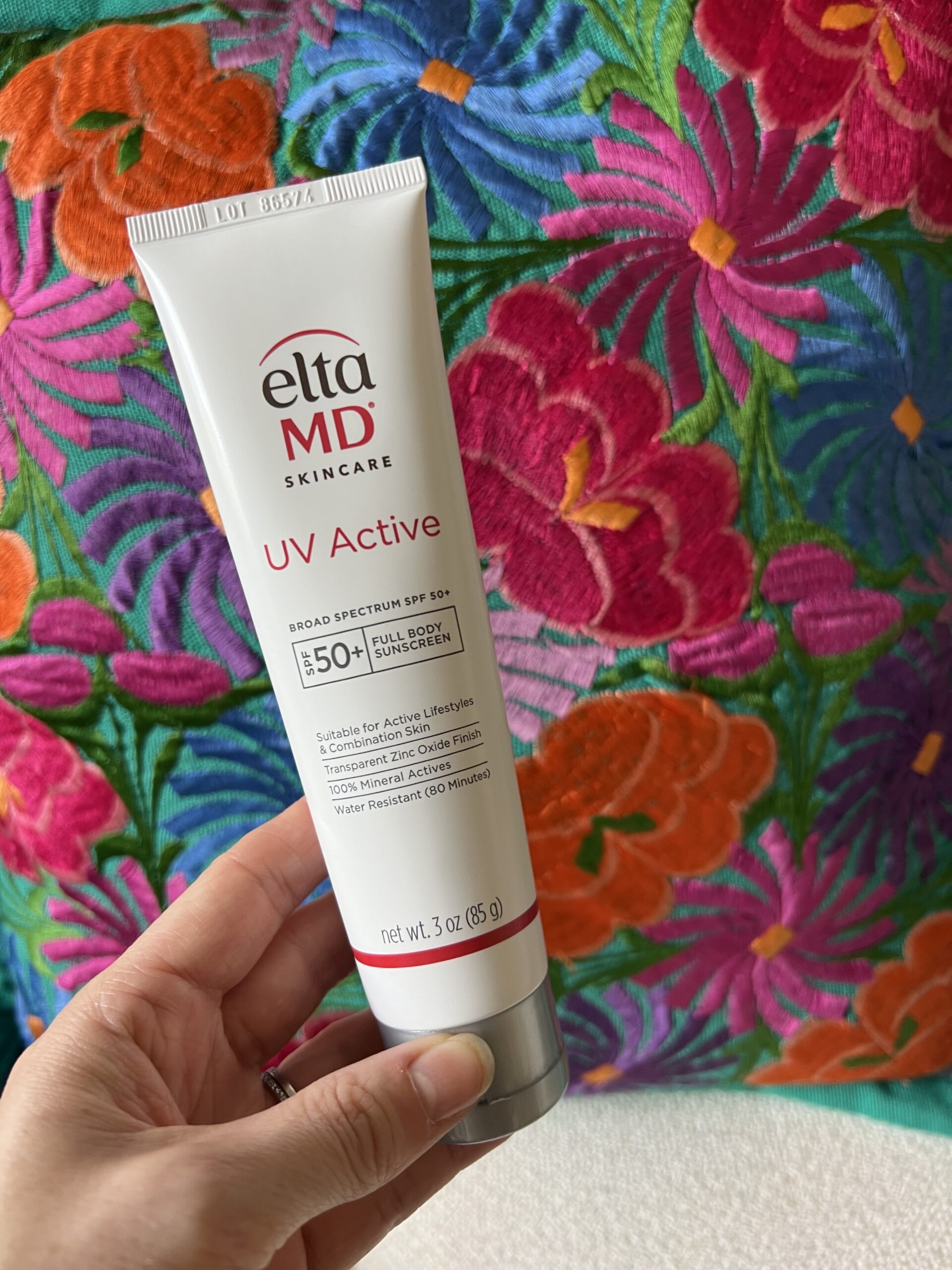
EltaMD UV Active Full Body Sunscreen Lotion, SPF 50+
This pick is one of the few EltaMD sunscreens that is actually non-toxic, according to the EWG website. It’s relatively transparent, but does still leave a bit of a white cast. I love how easy this one is to blend in. The formula is like a milky cream and leaves a beautiful sheen to the skin, too. This is a good option for those who are active and outdoors a lot. It’s water-resistant up to 80 minutes and does a good job of staying put.
The downside of this pick is that it’s $38 for 3 fluid oz. But if you’re looking for a more high-end, non-toxic sunscreen, I would go with this one.
Available at Amazon ($38)


